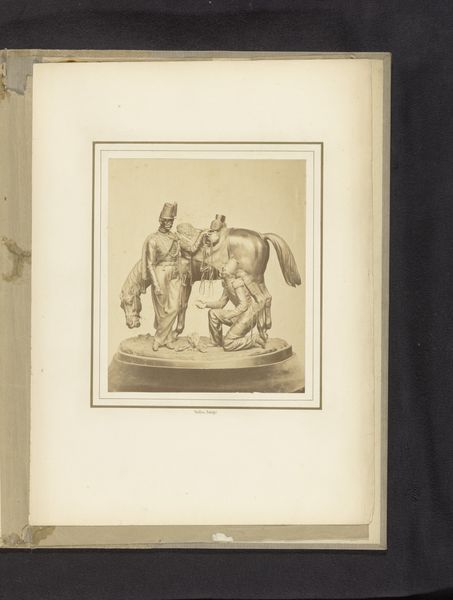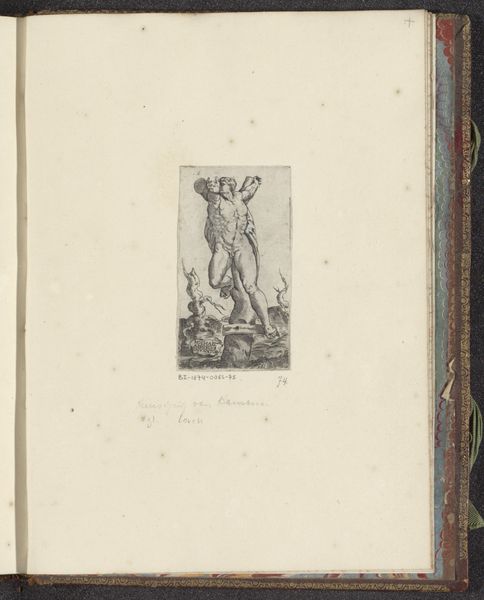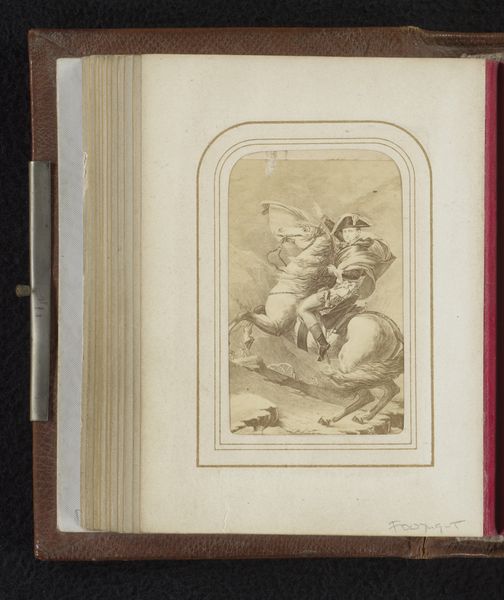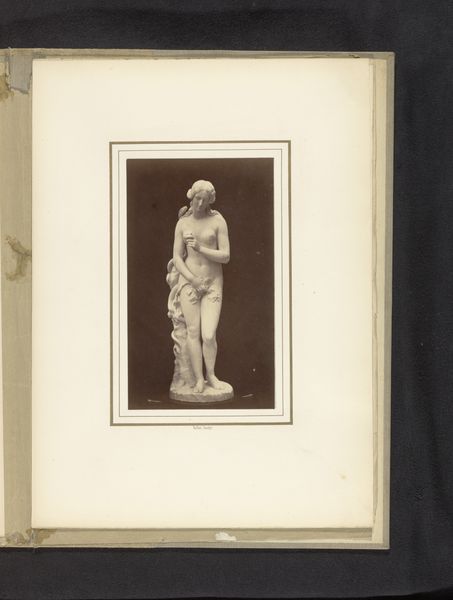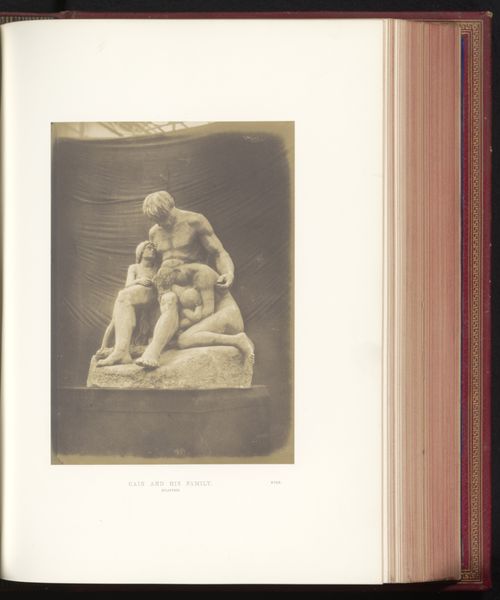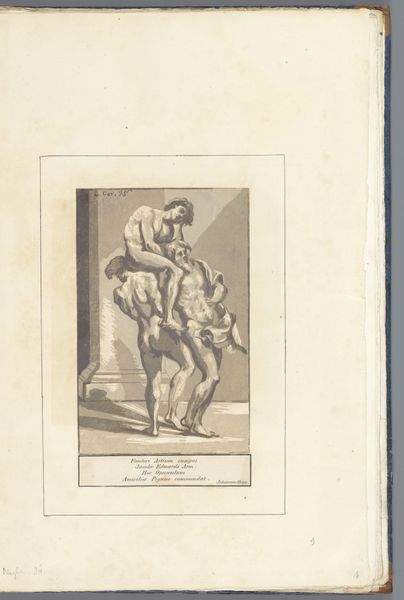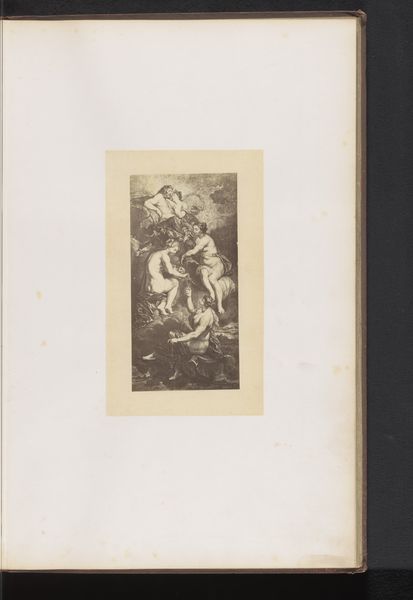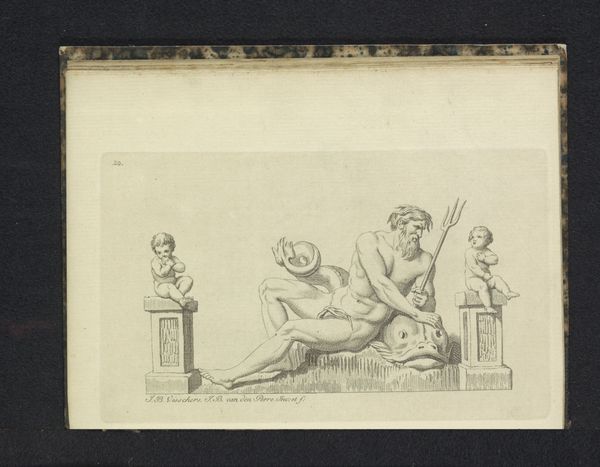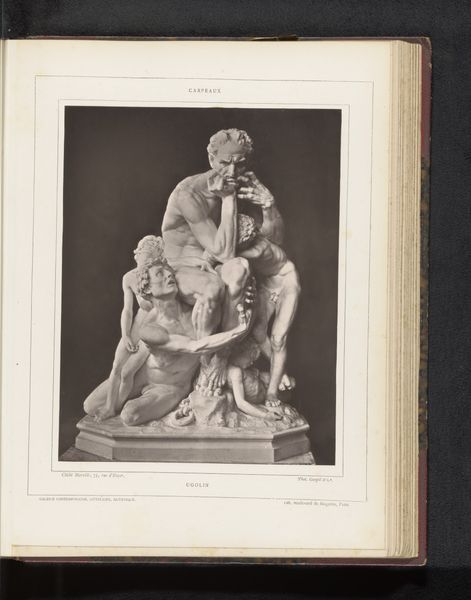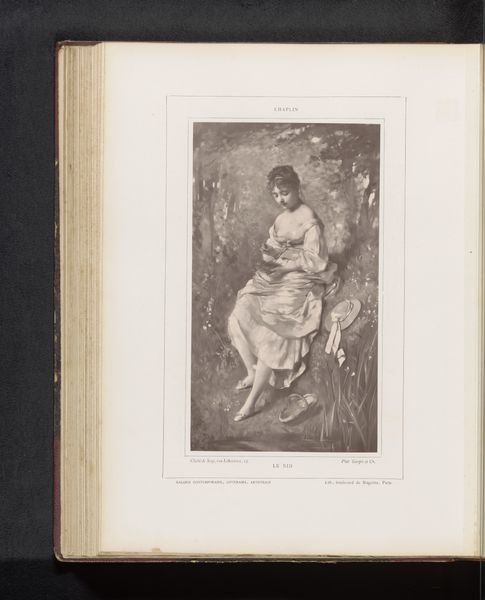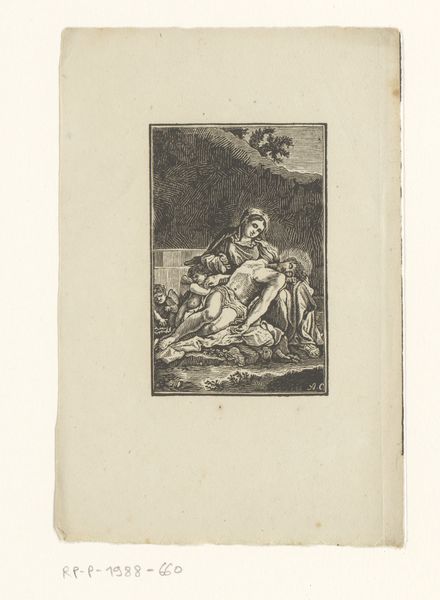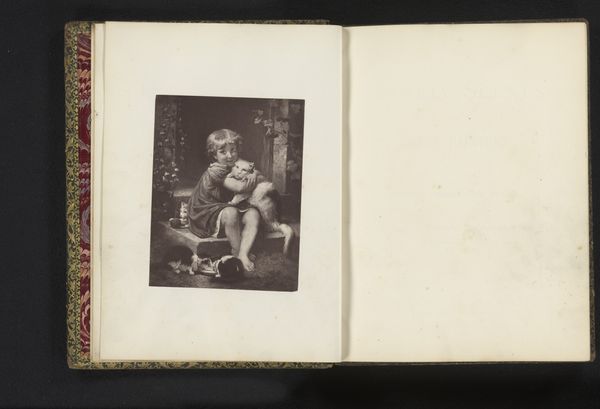
Sculptuur van een man met een vrouw in zijn schoot, een buste van een sater en een geit, door Leopold Borbone before 1859
0:00
0:00
photography, sculpture
#
portrait
#
classical-realism
#
photography
#
sculpture
#
academic-art
Dimensions: height 183 mm, width 146 mm
Copyright: Rijks Museum: Open Domain
Editor: This is a photograph taken before 1859 by Grillet jeune. It captures Leopold Borbone’s sculpture, "Sculptuur van een man met een vrouw in zijn schoot, een buste van een sater en een geit." It feels very staged and theatrical, but also classically composed. How do you see this work within its historical context? Curator: It’s a fascinating piece precisely because it’s a photograph *of* a sculpture. The sculpture itself, rooted in academic art and classical realism, presents a very specific view of masculine dominance and feminine submission that was prevalent, and largely unquestioned, in that era. How does photography complicate or reinforce that? Editor: That's interesting. I hadn't considered the layered representation. The sculpture itself depicts this power dynamic, and then the photograph captures and potentially disseminates it further. But is there something in the photographic medium itself that pushes against this reading? Curator: Precisely! Photography, even in its early stages, had a documentary function. The photographer, by choosing the angle, lighting, and framing, is also interpreting the original sculpture. It's a visual record, but it's also a commentary. How does the inclusion of the satyr and goat at the top shift this understanding for you? Are we invited to consider how the gaze functions here? Editor: I think the satyr and goat could be a signal that maybe the main couple isn’t something to aspire to – but a critique of the elite’s excessive behaviours, almost like a morality tale. But the artistic interpretation, made into photo-form, creates an access point to explore social injustices around these power dynamics. Curator: Absolutely. By engaging with both the subject and medium, we can have an insightful, informed critique of power dynamics and class structures and open ourselves to imagining alternate models that emphasize greater autonomy and equity. Editor: Thank you. Thinking about it this way gives the image greater nuance.
Comments
No comments
Be the first to comment and join the conversation on the ultimate creative platform.
